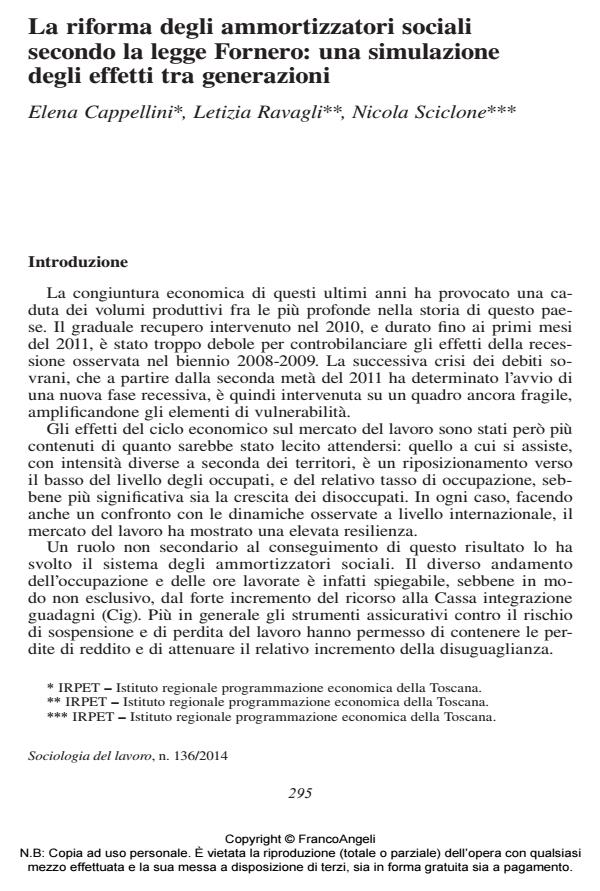The reform of social safety nets under the law Fornero: a simulation of the effects between generations
Journal title SOCIOLOGIA DEL LAVORO
Author/s Elena Cappellini, Letizia Ravagli, Nicola Sciclone
Publishing Year 2014 Issue 2014/136
Language Italian Pages 21 P. 295-315 File size 309 KB
DOI 10.3280/SL2014-136016
DOI is like a bar code for intellectual property: to have more infomation
click here
Below, you can see the article first page
If you want to buy this article in PDF format, you can do it, following the instructions to buy download credits

FrancoAngeli is member of Publishers International Linking Association, Inc (PILA), a not-for-profit association which run the CrossRef service enabling links to and from online scholarly content.
In Italy, the crisis drastically reduced employment and hours worked, particularly on individuals with flexible contracts – basically young workers – given the ‘duality’ of the Italian labour system. The aim of this paper is to assess the role of the Italian social protection system in reducing individual income losses during the 2008-2012 economic downturn. Besides, this study aims at providing a first evaluation of the labour market reform recently introduced in Italy. The paper joins in the vast debate on flexicurity, by building a microsimulation model based on the Italian Labour Force Survey (ISTAT) and on administrative data (INPS). Results attest that social security treatments significantly reduced income losses both for dismissed and suspended workers. Workers under 35 years old are less protected, compared to older ones, by the social safety system in force up to December 2012. The social security reform succeeded in balancing protections in an intergenerational perspective, even if large differences remain.
Keywords: Crisis, labor market, social safety nets, microsimulation
Elena Cappellini, Letizia Ravagli, Nicola Sciclone, La riforma degli ammortizzatori sociali secondo la legge Fornero: una simulazione degli effetti tra generazioni in "SOCIOLOGIA DEL LAVORO " 136/2014, pp 295-315, DOI: 10.3280/SL2014-136016